Info
Subfamily: Chloridoideae
Genus etymology: Dinebra = "little tail" [Arabic, originally dzanaib before being Latinized], refering to the tips of the glumes
Species etymology: retroflexa = "backwards bent" [Latin] refering to the inflorescence branches
Photosynthetic type: C4 (warm season)
Nativity: naturalized - accidental
First recorded in Hawaiʻi: 2022
Map
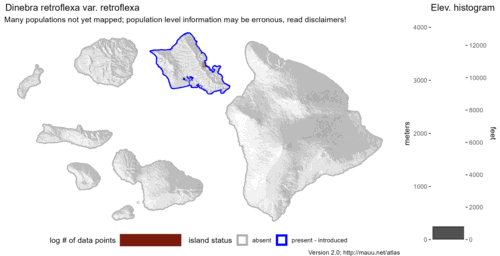
Inflorescence
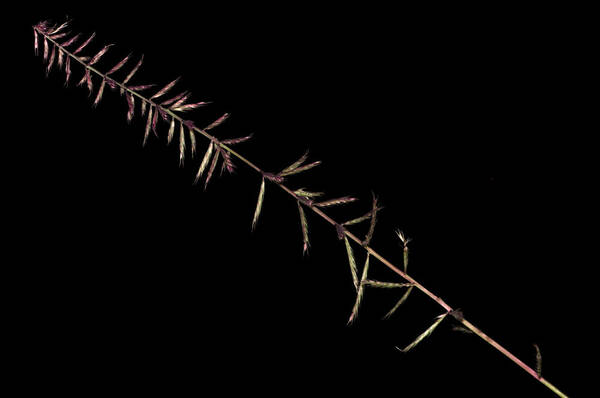
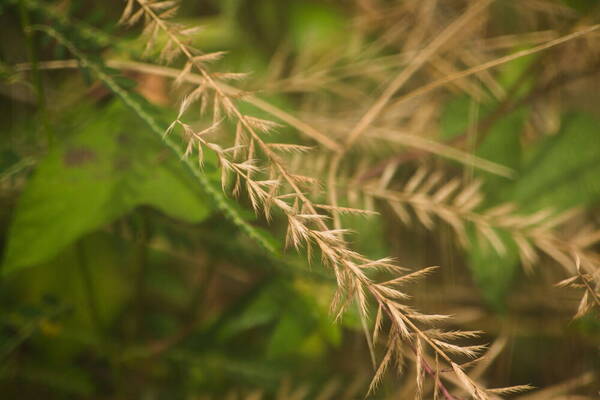
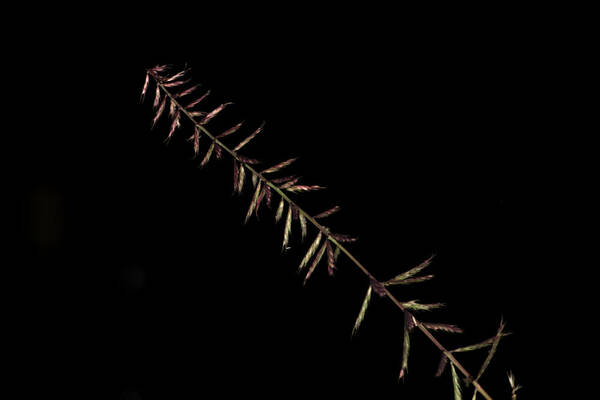
Habit
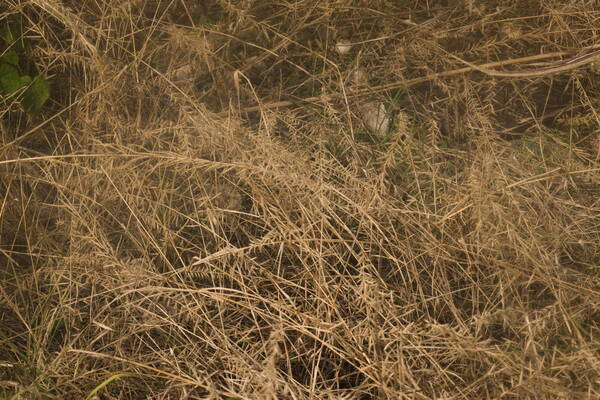
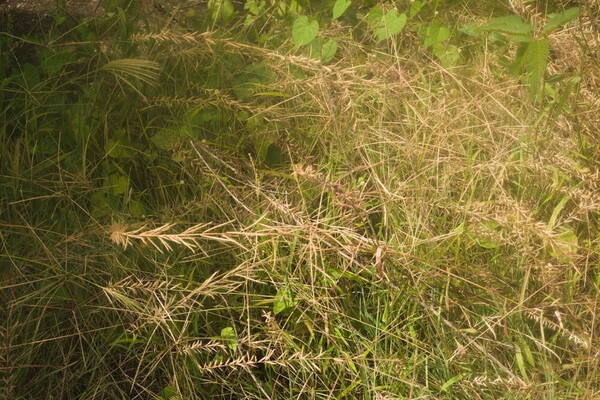
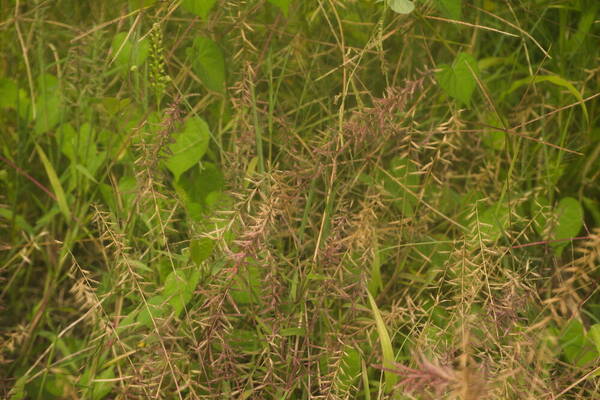
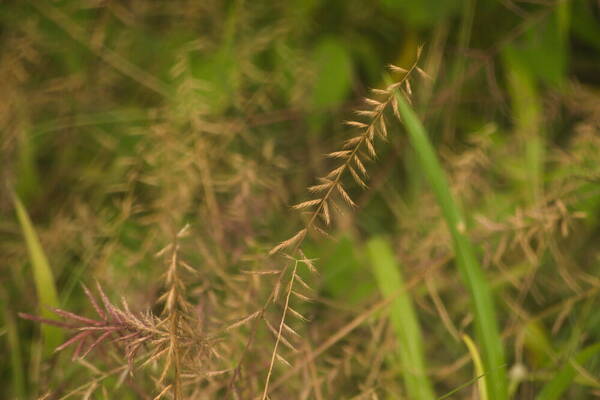
Spikelets
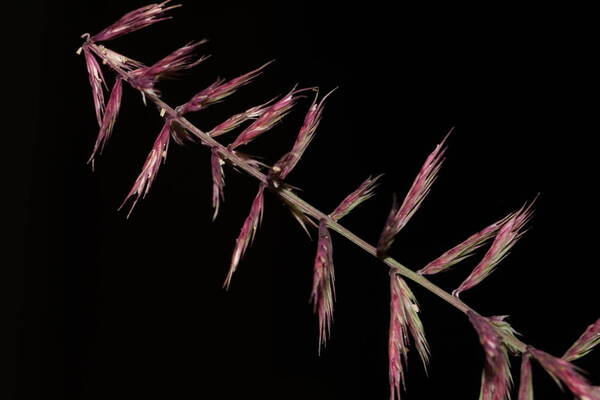
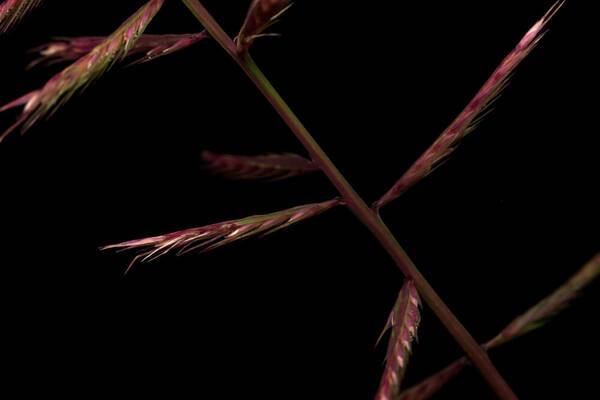
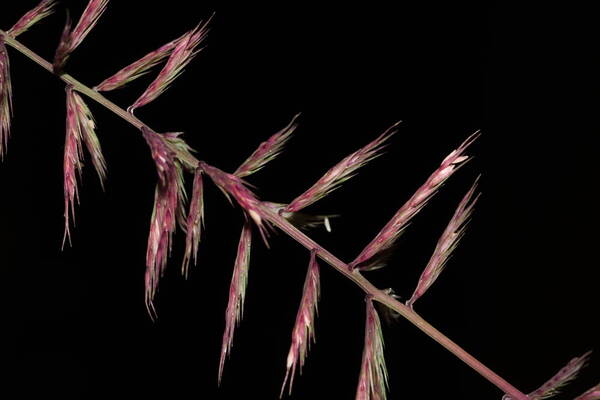
Description
Loosely tufted annual; culms up to 112 cm. high, slender, usually straggling and ascending from a decumbent base, infrequently erect, much branched and often rooting at the lower nodes. Leaves glandular especially on the sheaths; leaf-blades 4.5–28 cm. long, 4–8 mm. wide, finely pointed; ligule 1.2–1.6 mm. long, minutely lacerate. Inflorescence 8–34 cm. long, linear with short oblong to wedge-shaped densely crowded spikes, varying to elliptic-oblong or pyramidal with longer linear spikes spaced up to 3 cm. apart; spikes 0.6–5(–7) cm. long, stiff, ascending at first, reflexing and deciduous at maturity. Spikelets 1–3-flowered, narrowly wedge-shaped, 5.7–9 mm. long, closely overlapping on the flattened, narrowly green-winged rhachis; glumes narrowly elliptic with caudate curving tips, 6.1–8.2 mm. long, coriaceous, asymmetric, usually overlapping on the abaxial side and obscuring the florets, glandular along the keel; lemmas narrowly ovate, 2.1–2.9 mm. long, appressed pilose along the lateral nerves and on the lower half of the back around the central nerve, acute to emarginate, mucronulate; palea appressed pilose on the flaps alongside the keels. Caryopsis ± 1 mm. long.
(Description source: Clayton, W.D. 1970. Flora of Tropical East Africa. Gramineae (Part 1). Crown Agents for Oversea Governments and Administrations, London. 176 pp. )
Plants loosely tufted. Culms 13–120 cm, decumbent, straggling, often rooting at the lower nodes. Leaves sometimes glandular, particularly on the sheaths; blades 4.5–28 cm long, 4–8 mm wide, finely pointed. Panicles 8–34 cm; branches 0.6–5(7) cm, stiff, initially ascending, reflexed at maturity; disarticulation at the base of the branches. Spikelets 5.7–9 mm, with 1–3 florets. Glumes 5.7–9 mm, asymmetric, coriaceous, keels glandular, apices caudate-curving; lemmas 2.1–2.9 mm, narrowly ovate, appressed pubescent on the lateral veins and adjacent to the lower 1/2 of the central vein; paleas appressed pubescent on the flaps adjacent to the keels. 2n = 20.
(Description source: Barkworth, M.E., Capels, K.M., Long, S. & Piep, M.B. (eds.) 2003. Flora of North America, north of Mexico. Volume 25. Magnoliophyta: Commelinidae (in part): Poaceae, Part 2. Oxford University Press, New York. 783 pp. http://floranorthamerica.org/Dinebra_retroflexa_var._retroflexa )